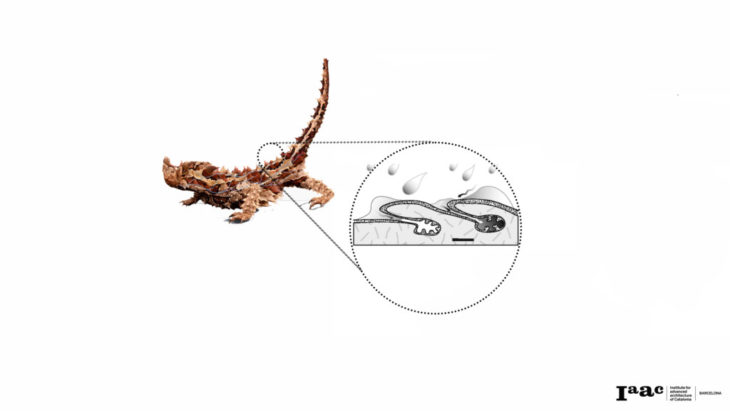
The thorny devil as an inpiration to the interactive facade system.
The modular design is made up of a layer of mesh that acts as net, in a diamond shape following the surface diagrid subdivision. The net collects water from fog, the diameter of the pipe act as storage space for the water.
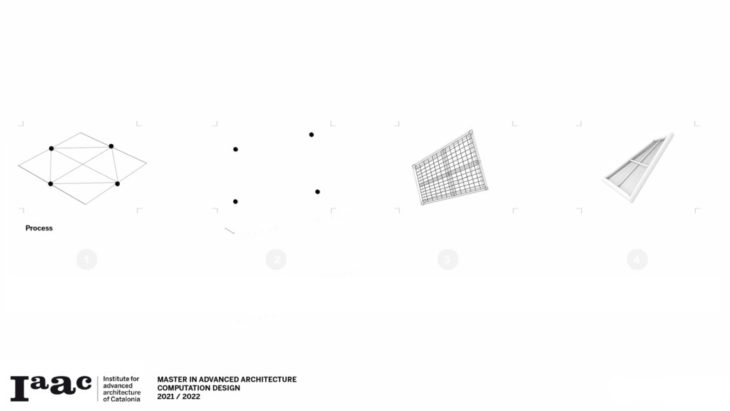
Process diagram showing how the facade module was developed.
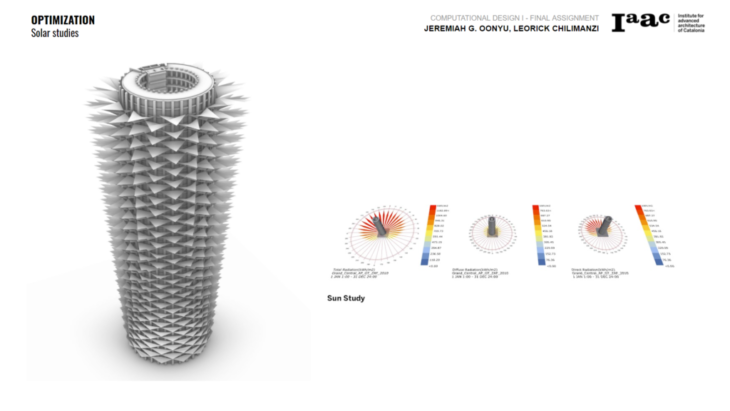
Solar studies that inform the various orientations of the skin as per the time of day.
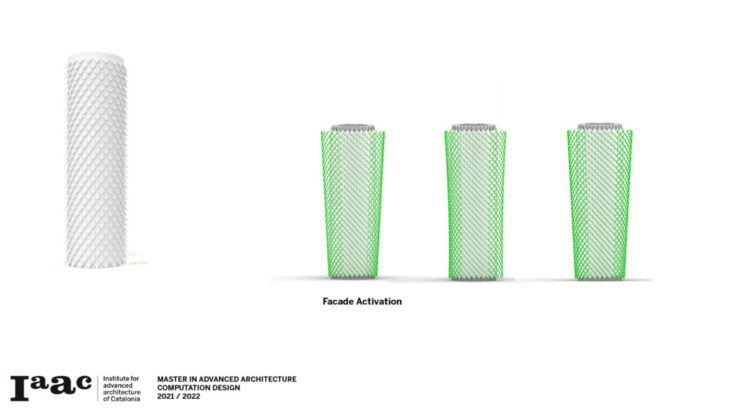
Image showing the various facade activations at different times of day.
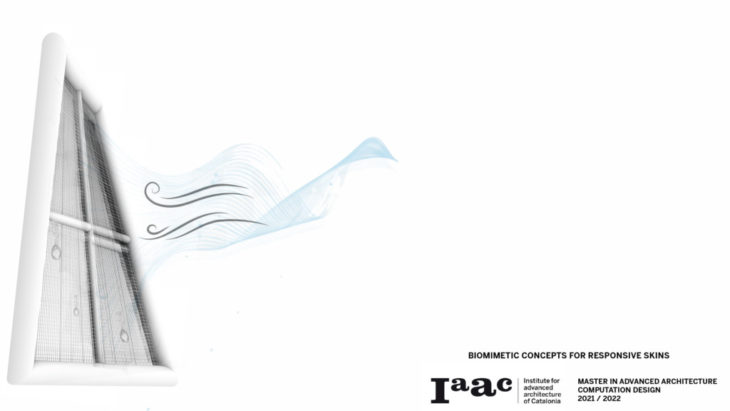
Typical diagrid skin module with a netted surface to grab condensation from air.
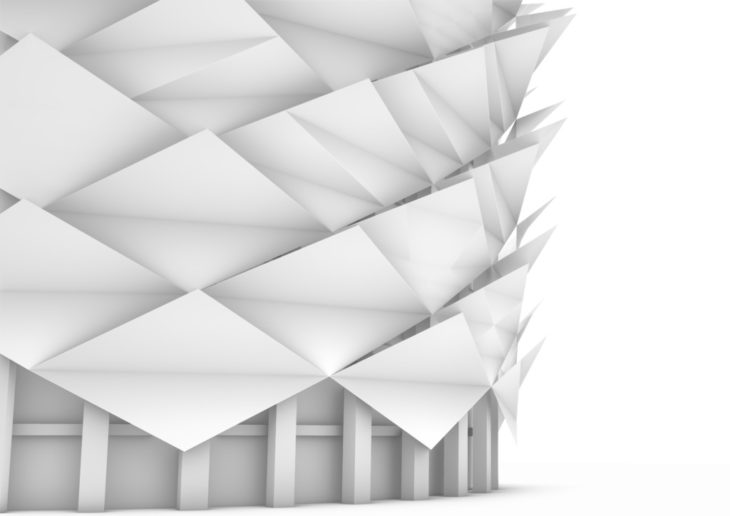
Close up view of the facade system.
Pseudocode
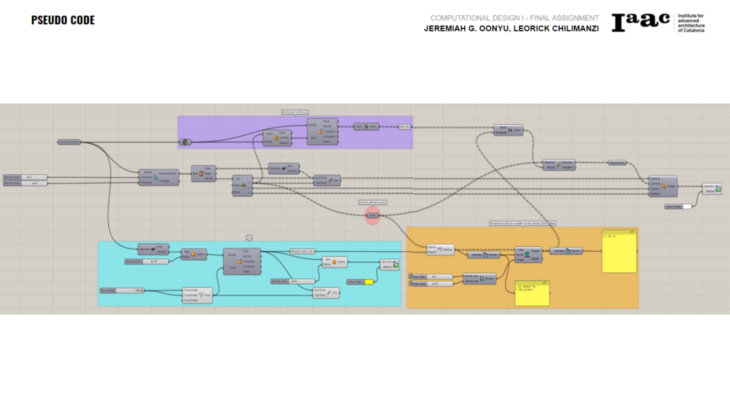
Pseudo code for the Thorney devil.
- Surface component: set on surface in rhino
- Diamond cells (Plug-In Lunch Box)
- Scale the Diamond cells
- Use the Brep to deconstruct the diamond panels.
- Use the List component to identify the different points on the panel.
- Attractor Point (Sun)
- By using the Evaluate srf component we create the sun and set the sun path.
- We use the Distance component to determine the distance between attractor point (sun) and center of (scaled) Diamond cells.
- Identify the Normal of each Diamond cell (with Polygon center and surface closest point) to get direction of Vector.
- Move geometry
- Use the Amplitude component to create a vector with the direction of the normal of each Diamond cell and the remapped distance between the center points and the attractor point.
- Use the vector to move the geometry.
- Create loft with the initial Diamonds layer.
- Reconstruct all the surfaces from the points previously deconstructed.
“The Thorny Devil” is a project of IAAC, the Institute for Advanced Architecture of Catalonia, developed during the Master in Advanced Architecture (MAA01) 2020/21 by students: Jeremiah G. Oonyu & Leorick Chilimanzi; faculty: David Andrés León; faculty assistant: Ashkan Foroughi; and student assistant: Laukik Lad